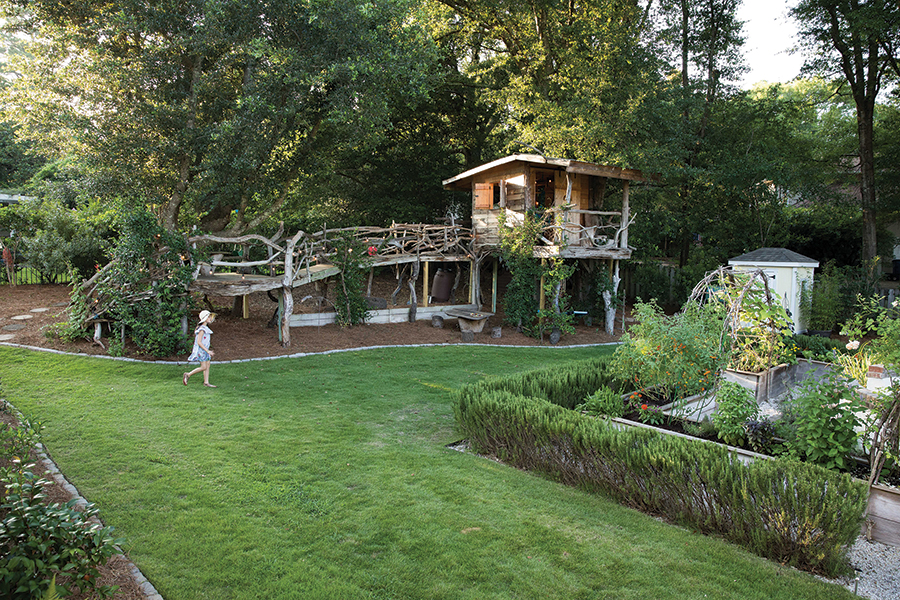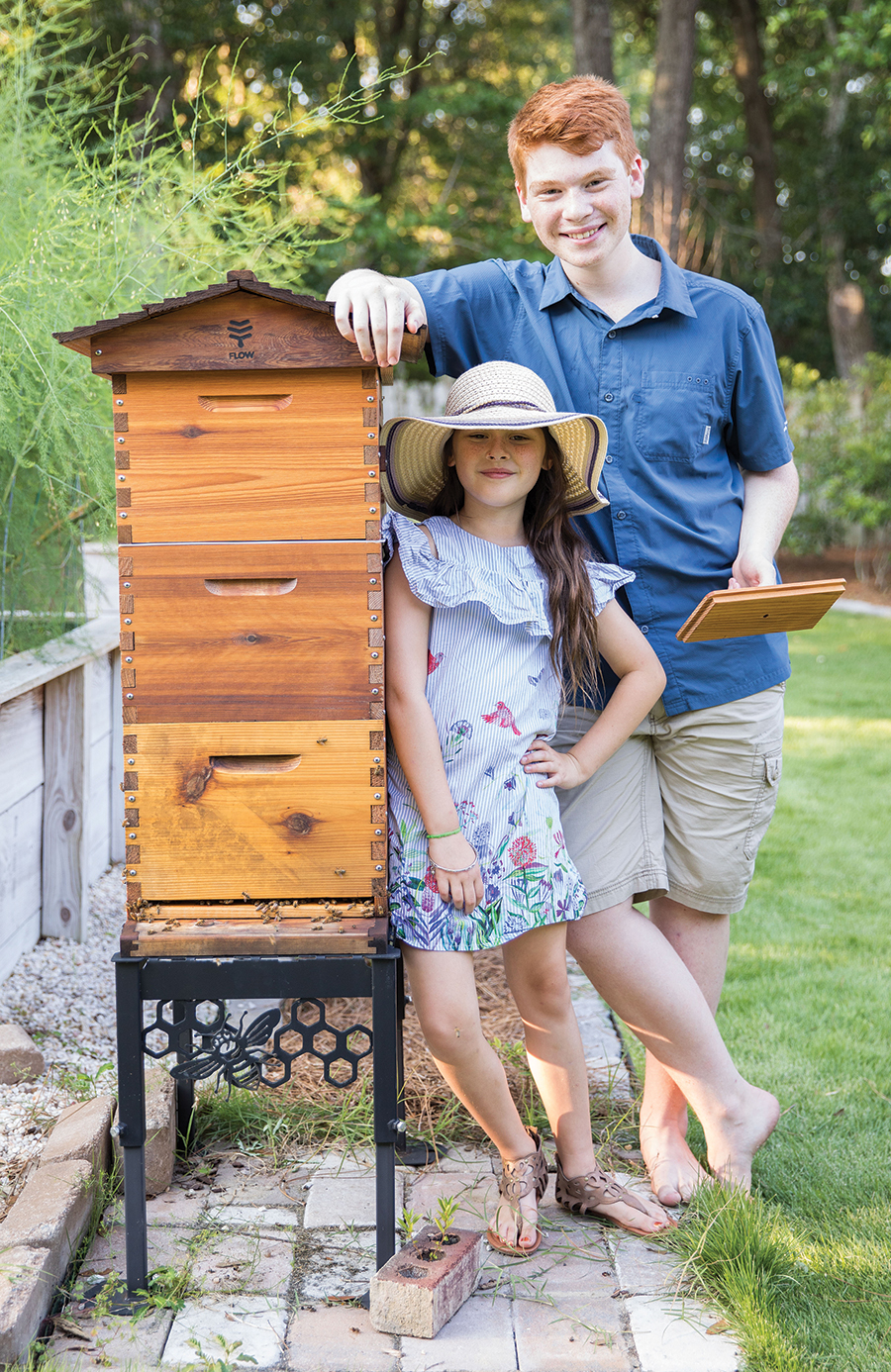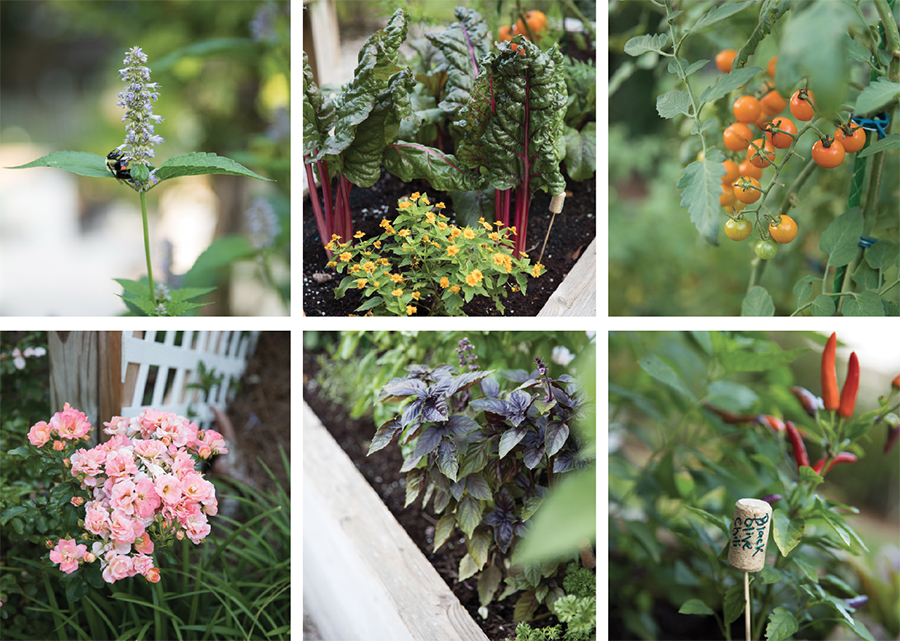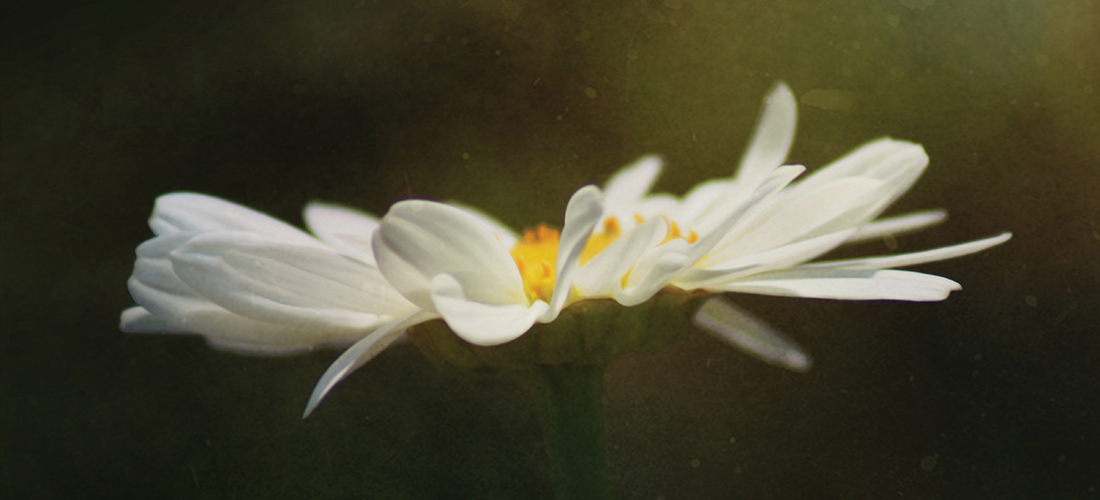Creativity meets abundance in the all natural home and garden of the Holmes family
By Barbara J. Sullivan • Photographs By Andrew Sherman
Given a half-acre blank slate for a family-oriented house and garden, there is no end of design possibilities. But most people, if we’re honest, don’t stretch their imaginations too far beyond the predictable. What if you threw in a little creativity? You could design an outdoor-indoor space that celebrates the bounty of nature while offering up some kid magic at the same time. How about setting it up so kids could clamber across a swinging bridge to their own secret fort, whoosh down a zipline while friends zap them from a water balloon slingshot? A place where they could sleep under the stars in a hammock high up in the treetops, run barefoot through thick soft grass, stuff themselves with strawberries, raspberries, elderberries, blackberries, blueberries, goji berries — every sort of fruit and berry? Cuddle with a giant lizard, inspect the bees as they softly buzz around the hive stand, raise rescue dogs and cats, bring sea creatures home to live, watch the full moon rise over the osprey nest at night while they roast marshmallows in the fire pit with friends and family? It wouldn’t hurt to have the scent of roses, mint, dill, lavender and a dozen other herbs and vegetables wafting gently in the breeze while someone strums the ukulele. Doesn’t that sound, as the kids would say, “awesome”?
Awesome is a word the Holmes family uses a lot, whether they’re talking about the zingy taste of a cherry tomato wrapped in arugula (both picked from the abundant raised vegetable garden and eaten on the spot) or how you can watch the egrets roost in the distant marsh trees at sunset when you’re sitting on the lanai by the pool, or how great the new bat house is going to be. Their enthusiasm is infectious. Their home is an ecosystem of delight.
Michelle and Scott Holmes have professional careers, as a dentist and an attorney, respectively. Their son Carson, who is now 15, and daughter Piper, 8, are both busy with studies and friends — and happen to be actors as well. Life is something of a whirlwind. And yet the home life that the family has created has nothing of the LED-screen-dependent, convenience-food-laden, disconnected frenzy so emblematic of 21st-century life. They have created this rich and balanced physical space, as well as the way they live in it, through a unique combination of scientific research, artistic design and inspired exuberance. Inspiration is surely a key word here.

Years ago, when Carson was very young and very sick, his parents worried for his survival. They consulted a number of doctors before finding one who diagnosed celiac disease and told them his intestinal flora were destroyed. Eating organic, natural food had not been a priority up until then. But after studying the science behind healthy eating, it became their mission. And when it came time to build a new house in the Turtle Hall neighborhood near Wrightsville Beach, they decided that they would create a place where their children could play outside, roll in the grass, pick fresh vegetables and fruit, run barefoot and learn about the natural world on a daily basis.
The lawn, lush and green, has never had any chemicals sprayed on it. And, other than the nontoxic, natural fungicide neem oil, none of the fruits, vegetables, flowers or herbs has been sprayed. When the Holmeses designed the garden, they laid down a line of natural biochar around the edge of the property to absorb chemicals that might otherwise leech in from adjoining areas. “Everything’s organic and safe,” Michelle says. From the scientific reading she’s done, she has learned that people who garden and get their hands dirty are happier and healthier because of the release of serotonin and dopamine that naturally occurs. Having gone through Carson’s early medical crisis, she and Scott became aware that sprayed fruits and vegetables lose the beneficial bacteria needed for a healthy gut biome. “I don’t spray the vegetables,” she says. “They’re allowed to have bugs.”
This is not a typical backyard garden for southeastern North Carolina. There are 50 feet of berry bushes and brambles running along raised walkways to make them easier to pick. There are five kinds of maypop vine for making smoothies — the maypop being the original source for Hawaiian punch. There are loquats. If you are lucky you’ll get to sample Scott’s delicious loquat jam. There are rows of lavender — used by the family in soaps and potpourris and sometimes added to whipped cream and served over strawberries. There are pomegranates, persimmons, figs, an apple tree, a pear tree and peach trees, muscadine grapes, pineapple guava, cucumbers, Chinese cabbage, arugula, eggplant, tomatoes, spinach, radishes, sorrel, lemongrass, scarlet runner beans, bee balm, nasturtiums, two kinds of parsley, three kinds of basil, four or five kinds of mint, dill, and generous explosions of rosemary. Subtropical bananas provide leaf-wrappers for grilled fish. All of it is thriving.

Have we left something out? Oh yes, loofahs. A profusion of loofahs. Piper invites friends over to make gifts out of them by adding soap and dehydrated crushed lavender from the garden. Sometimes they add homemade rose oil, distilled from the copious pink and yellow David Austin roses that smother the rose arches in late spring. On a summer evening she and her friends may be temporarily covered in red and black ladybugs as they release dozens of the beneficial insects into the garden at sunset. “It becomes a madhouse of children,” says Michelle. “I wanted this to be the house where all the kids want to come — where the kids say, ‘Let’s play, let’s hang out.’”
This love of the natural world extends to design of the house as well. After coming up the front path and being greeted at the door, a visitor is immediately ushered back into the outdoors, where an open-air lanai overlooks a clear blue swimming pool. And, no surprise, the pool is a carefully considered part of the family’s life. Michelle and Scott wanted a bacteriostatic pool, which uses copper plates and processes of ionization and oxidation with no need for chemicals. Because no one in Wilmington knew how to do it, they contacted the owner of a California company, who flew out and helped with the installation.
Adjacent to the pool, a small guest cabana houses the only TV on the property — for visitors who just can’t do without. Inside the main house, the space was designed with an emphasis on common family-sharing spaces, including an open kitchen. The bedrooms are relatively small — just for sleeping and homework, not for hanging out. A window in the parents’ room provides a bed-level view of the moon rising. There are two built-in play walls for the cats and a piece of furniture in the den, which will one day become the enclosure for Rhacodactylus leachianus, the largest of Carson’s geckos. Carson previously curated a 55-gallon fish tank and a circular jellyfish tank, the only requirement being that he had to catch the inhabitants himself and bring them home. Local docks and tidal pools became frequent family haunts. At any one time, the tanks might have held flounder, pipe fish, spider fish, men-of-war, anemones, sea squirts, triggerfish or any of a dozen other aquatic species.

Because there is no TV and very limited “screen time,” the family is actively engaged in the real, as opposed to virtual, world. Not only does everyone know about and appreciate the local plants and insects, but all four family members help weed the garden and raise the bees (four bee suits of varying sizes hang inside the back door). Everyone in the family cooks. It’s a requirement. So is playing a musical instrument. Scott plays piano and violin, Carson sings and plays ukulele, Piper plays piano and ukulele. Michelle can’t read music so she has a “cheater” ukulele called a populele with flashing lights telling her which keys to press.
It’s a full, rich life that takes advantage of the ever-changing gifts of the natural world and manages to marry indoors and outdoors seamlessly. The design of the French-inspired vegetable and fruit gardens, the tree-top play area, the lanai and guesthouse and the main house itself are not only delightfully personal, but they are celebratory of life itself. Creativity meets abundance full on. If you visit you can’t help but want to participate. You may just want to whip up a maypop smoothie, sit out under the apple tree and teach yourself the ukulele.
Barbara Sullivan is the author of Garden Perennials for the Coastal South and a frequent lecturer on garden topics.


